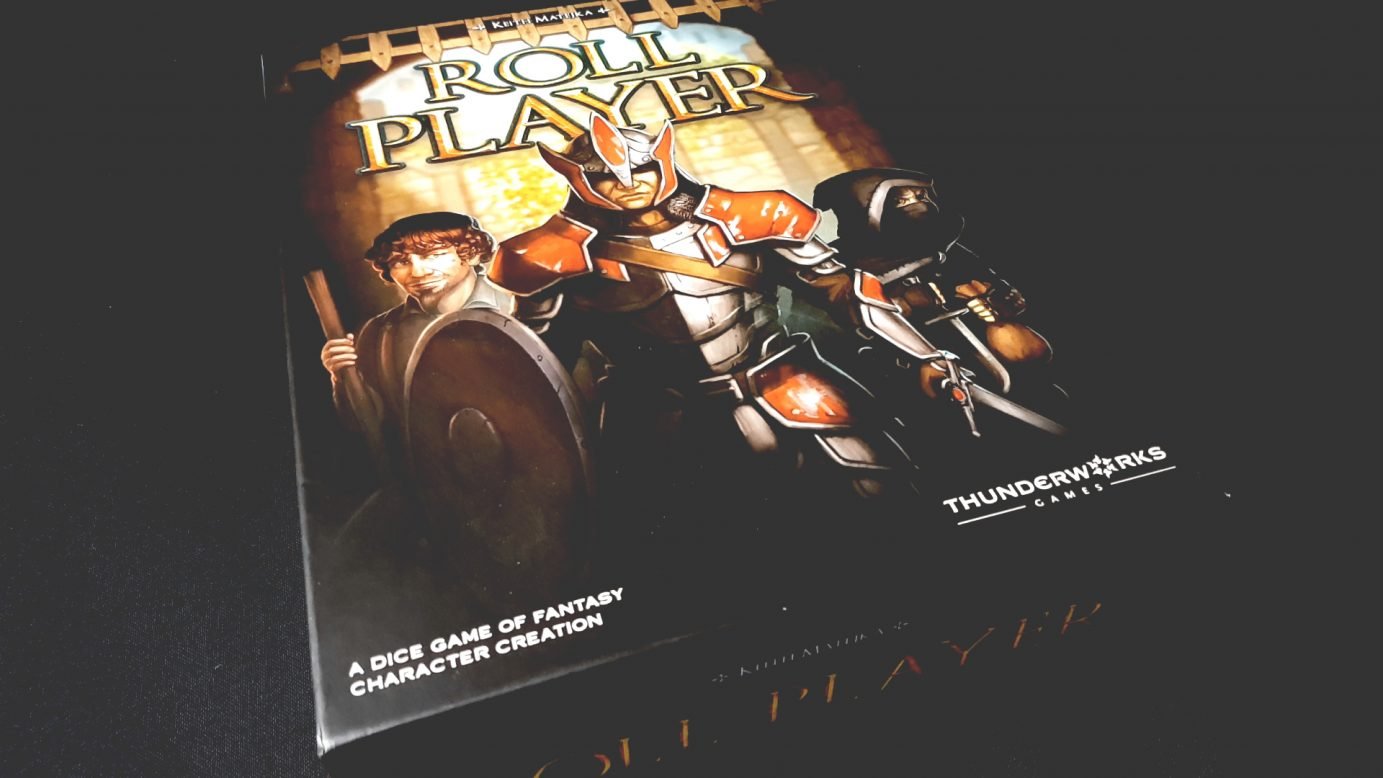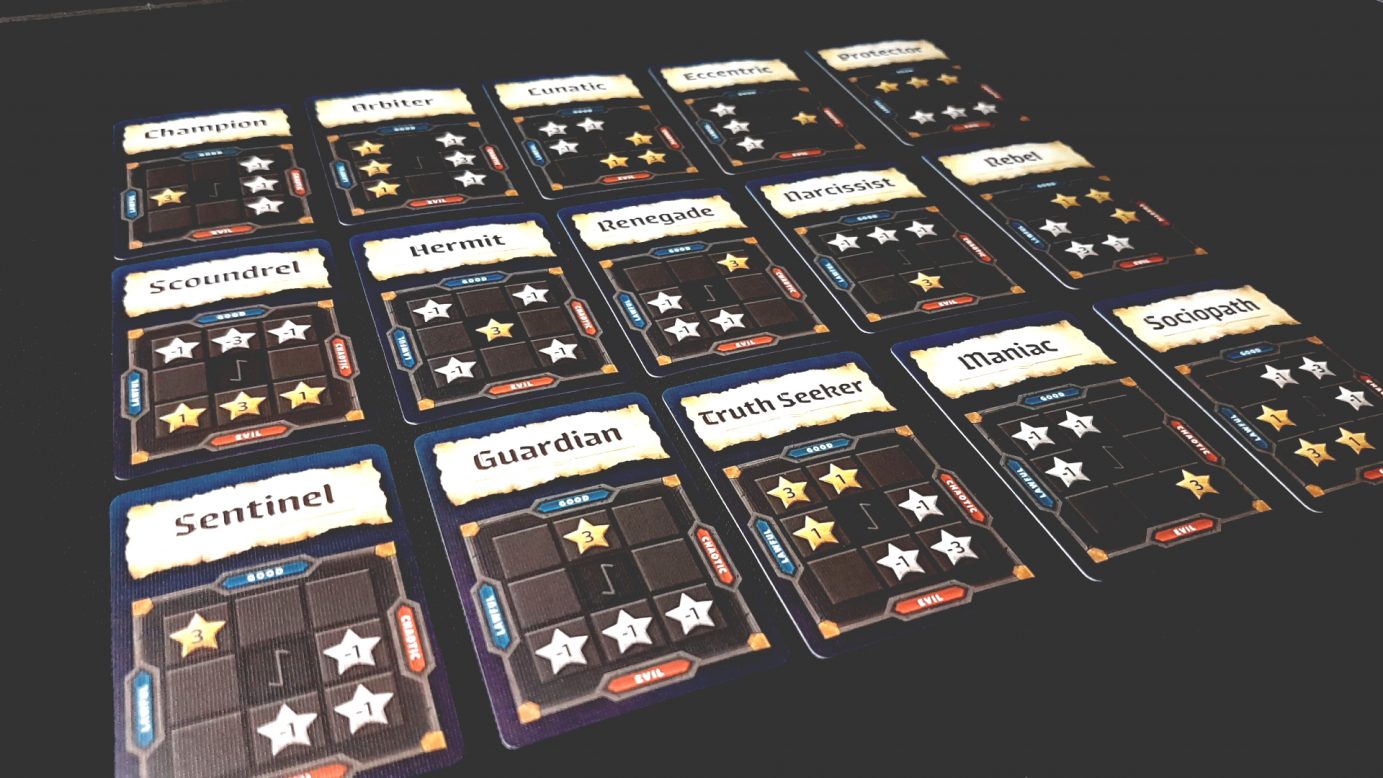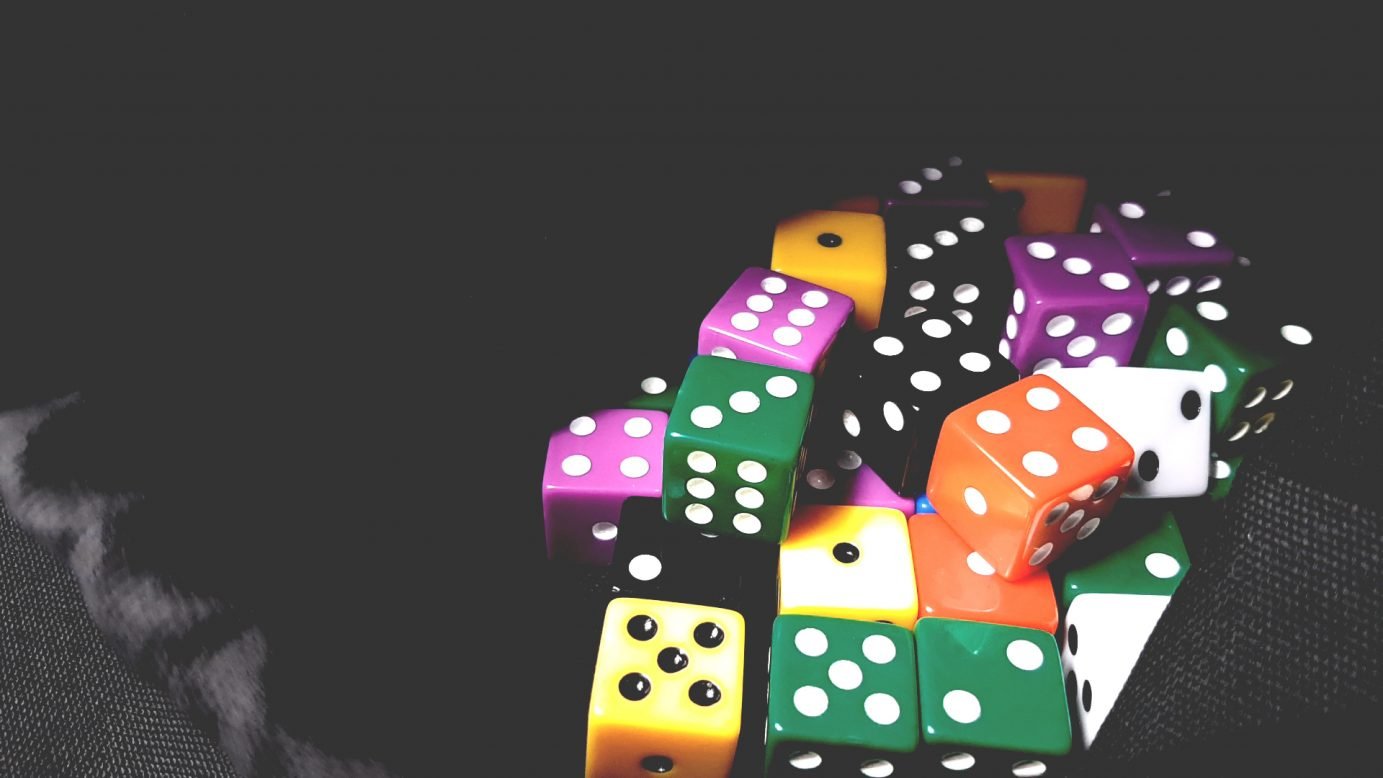| Game Details | |
|---|---|
| Name | Roll Player (2016) |
| Accessibility Report | Meeple Like Us |
| Complexity | Medium Light [2.43] |
| BGG Rank | 263 [7.44] |
| Player Count | 1-4 |
| Designer(s) | Keith Matejka |
| Buy it! | Amazon Link |
If I’m being honest, the thing I enjoy the most in any RPG campaign is character creation. There’s something in the process that manages to convey all the excitement and potential of a campaign without any of the corresponding disappointment of actually putting your hero to the test. The attributes, skills, backgrounds and more are a playground for the imagination. You get to envisage the kind of person you’d like to be, without ever finding yourself dissolved in acid because your legendary acrobat failed a simple dexterity check in the first encounter. In that respect, Roll Player may be the perfect role-playing game for people like me.

Back in the days of the old Gold Box SSI roleplaying adventure games, you got to sit down with the party creation tool and try your utmost to min-max the stats of the various characters that made up your group. And then eventually you’d just go in and modify the stats to be exactly what you wanted. It gave you an option to do that because this was a game from a more trusting time. I have though spent many more hours in the character generation screen of Baldur’s Gate than I ever spent in the game. I’d compulsively hit that ‘reroll’ button like it owed me money. I’d cast the bones again and again until I had a stat pool high enough to give myself just a tiny little bit of additional advantage in the cruel and unforgiving adventure to come. That’s really the experience of Roll Player in a nutshell – it’s the character generation screen of a fantasy RPG turned into a game in its own right.
And you know what? It’s actually a lot more fun than that little vignette description might imply.

Here’s how it works. You take control of a player board that marks you as belonging to a particular fantasy race. Halflings, orcs and so on – it’s all very traditional. The board comes with sockets into which you will later place rolled dice, playing them in from left to right in the row of your choice as the rounds progress. This is your character, initially full of promise and potential but soon to become a mess of compromises and miserable die rolls. Sort of. We’ll get to that.

You then take possession of a card that indicates the class to which you belong – fighter, mage, thief, ranger and so on. Each of those classes will indicate a set of stat goals you need to reach. Rangers need high constitution, mages high intelligence and so on. You’ll also get a special power as a consequence of being a member of that class, and be given a special colour that represents your ‘class dice’. The more class dice you place, and the greater the match between your rolled stats and your character class, the better a score you’ll get.
On top of this you’ll add a backstory that puts a filter of colour expectations on your player board. ‘The third charisma die must be yellow, the second strength die must be red’. That kind of thing. The more of these restrictions you meet, the better it’ll be for your chances of winning.

And then, to top it off, you’ll also be given an alignment archetype. Certain things you do in the game will move you along the usual lawful-chaos good-evil axes. If you can arrange at the end of the game to be in a combination compatible with your card it’ll yield you a bonus.
All this together – that’s the person who you are supposed to become. The only thing standing between you and your glorious destiny is the hand of fate that will give every rolled die a twist in an unfortunate direction at the time you most need them to go your way. Luckily though this is a character creation system run by a very good-natured gamesmaster. Your hero is going to be legendary. The game will make sure of it.

Every round, the active player grabs a pile of dice from the bag and rolls them. They then get arranged in ascending order in an ‘initiative’ track. The higher value a die you take, the longer it is before you get to buy something from the marketplace of equipment and techniques. It’s an elegant system because it forces some intense decision making into the act of dice selection. The right die for you, after all, is not necessarily the one that will let you guarantee access to the glittering treasures laid out before the group. But this is where it gets interesting.
See, every time you place a die in your character sheet you get to use the stat power of the row to which you assigned it. And these powers, mostly, are good. If you place a strength die, you get to flip any other die in your sheet to its opposite side. That awful one you placed just because it had the right colour can become a six in short order. Placing something in the dexterity row lets you swap two other dice on the sheet. Con lets you increase or decrease a die by one, and intelligence lets you reroll a die you had previously placed. Wisdom lets you move your alignment marker a space in an agreeable direction, and charisma… gives you a temporary gold piece.
There is a feature of Roll Player that is hard to interpret. If you’re charitable, and I’m of a mind to be so given the pun in the title, it’s quite viciously funny in how it deals with certain mechanical features in the old school RPGs on which it is riffing. Charisma in many games, for many characters, is often considered a ‘dump stat’ – a place where you put your worst attributes because it rarely has all that much of an impact on the capabilities of your character. You stick your three point roll into Charisma because your uncouth barbarian warrior is, in the end, as civil and articulate as you want him to be. In that respect, having charisma be such a useless stat in Roll Player is a subtle and sophisticated joke that nerds of a certain stripe will appreciate. On the other hand, maybe it’s a mechanistical failing that actually takes away a good deal of the tension that otherwise gets bundled into deciding where dice are to go. Maybe it’s both.

Once you’ve picked a die that works for the selection you have available, you then get to spend some of the gold you pick up for accomplishing certain goals. The marketplace takes possession of a new Amazon Prime delivery, and you get to select the best bits for what you’re trying to do. These purchases might give you access to special abilities you can use during your turn. They might loosen the restrictions you have on meeting stat goals. They might be equipment pieces that you can collect in sets to give you extra points in the end. Buying some of these, and using others, will be the primary mechanism by which you end up manipulating your alignment. Performing sleight of hand for example lets you move any die on your sheet to an empty space, but every time you employ it you’ll move a step towards lawlessness and that might not be something you really want. On the other hand, alignment scoring conditions aren’t especially generous so perhaps you won’t really care all that much. Maybe you’ll rely on the placement of wisdom dice to salve your conscience at the end of the game in much the same way as an evil rich bastard might employ a last-minute deathbed confession.
And all of this adds up to a game where there’s a lot going on, where you have a lot of tools for being able to manage your score, and interesting decisions threaded throughout. There’s no part of this that is loose, no part that is extraneous, and no part that isn’t, at a minimum, enjoyable. Everything from the game systems to the thematic trappings is well articulated in the design.
So, what’s the catch?

For me, the game falls down somewhat in the fact that it’s just too easy to make a character that meets the goals you have in front of you. The nature of the various stat powers you have, as limited in application as they are, work to trivialise many of the decisions you make. Why worry about grabbing a one if you can later easily change it to a six? Why agonise over the placement of a wrong colour die if you know you’ll get to swap it around later? The power that you have over board configuration is considerable, and it removes a lot of the tension that would otherwise be there. In Sagrada, to take an obvious example, every die you place feels like tightening a noose around your future self’s neck. Changes to the board you have constructed are costly and thus the compounding impact of mistakes can be difficult to bear. It makes every misplaced die feel like the artisinal flaw it’s supposed to represent. It feels weighty.
Roll Player on the other hand gives you so many chances to change your character, and in such significant ways, that it leans into a kind of ‘Screw it, fix it later’ mentality. That would be an interesting design if ‘fix it later’ weren’t such a viable, low-effort option. It all feels, in comparison, very flighty.
I feel the same way too about the stat goals, which tend towards the immensely forgiving. Many goals just need you to pass a threshold. Given the way the powers permit you to inflate your stats that may as well not even really exist for most of what you’re trying to get. Even hitting eighteen isn’t really that much of a chore. The only stat goals that pose a challenge are the ones that need you to achieve a particular number or small range of numbers, Again – you just have so many tools available that essentially your board is going to look like a munchkin’s character sheet before too much time has passed. You never have to balance, for example, keeping some stats very high and some stats very low. That at least would keep the effectiveness of some of the stat powers constrained. Mostly your character is hoping to be above average in everything and that means that you’re never put in a position where, for example, the red two is what you need to hit a backstory goal but the opposite of what you want for the class goal. There’s just too much give in the goals.
Coupled to this is an issue that often arises which is that some characters are inherently contradictory and some are inherently complementary and it’s not always going to be in your control which you end up having. Skills that move you away from your alignment might move an opponent closer to the one they want, and the only thing that made it so was the way in which you were dealt out your cards and what the marketplace spits out. It can feel very arbitrary and unfair in a game where really the only regular and reliable challenge is player versus player rather than player versus game.
None of this is to say that Roll Player is a bad design. It’s actually a very good design but that’s just not really what I’m looking for in a game of this nature. It’s certainly the game of this type that I’d give to someone that stresses over every move, but it’s probably not the one I’d go out of my way to pick up as a first choice for my own enjoyment.

And that’s perhaps the real feature of Roll Player that is most relevant here. As a design it has a lot to recommend it, but its own real challenge is not in how well its systems hang together. Rather the challenge it has to meet is a comparison to the many other games out there that occupy this ecological niche and manage to be more compelling propositions. It’s a victim of the awkward ‘fitness for purpose’ that has turned game design into an evolutionary charnel house. I couldn’t make any suggestions that meaningful improve upon it as a design. If it were the only game I had in this vein I’d undoubtedly be shouting its merits from the rooftops. Unfortunately it doesn’t have the tightness of Sagrada or the elegance of Azul and as such it only really has its theme to sell it – and honestly, that in itself is something of a problem.
I spend a lot of my time in this hobby playing games with people that wouldn’t dream of adopting the label ‘gamer’. That’s, I believe, the majority of people who play board games – even hobbyist games like we cover on the site. As such, a game which can be viewed as a satire on the weirdness of roleplaying game design is one that is too removed from a general purpose audience. It’s the opposite of the way in which Wingspan addresses the broader issues of acceptance. It has adopted a theme that requires a certain immersion in nerd culture for it to even make sense. It strikes me as a product that is perhaps ‘over-fittted’ to a certain demographic curve. Those of us that spend and have spent hours constructing fictional personalities for adventure in dangerous worlds will find that conceit appealing. Others… perhaps baffling. And worse – off-putting. I can imagine friends of mine that would simply freeze over were it to be brought out of an evening. I don’t imagine that happening with Sagrada or Azul.
Roll Player then is an odd proposition of a product – not evolutionary fit enough to thrive in its design space given the other games out there, but also too evolutionary specialized to thrive outside it in environments where its permissiveness might give it additional purchase. It’s a very good game that I still can’t really recommend and that always feels like a massive cop-out.
Sorry.
